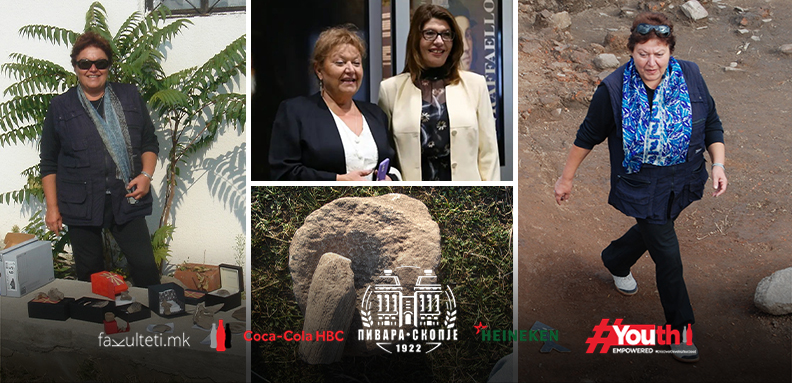
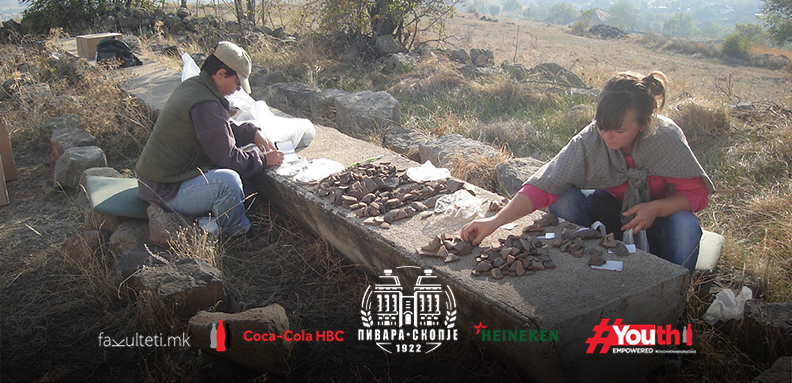
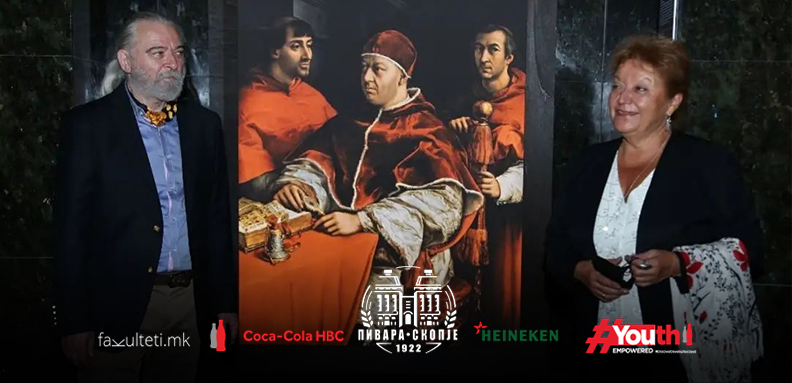
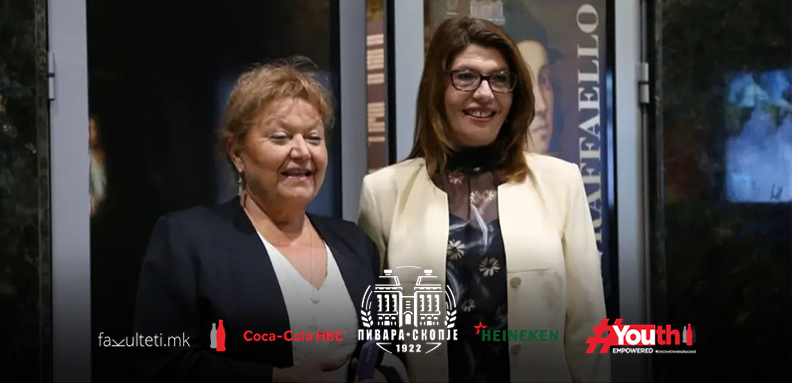
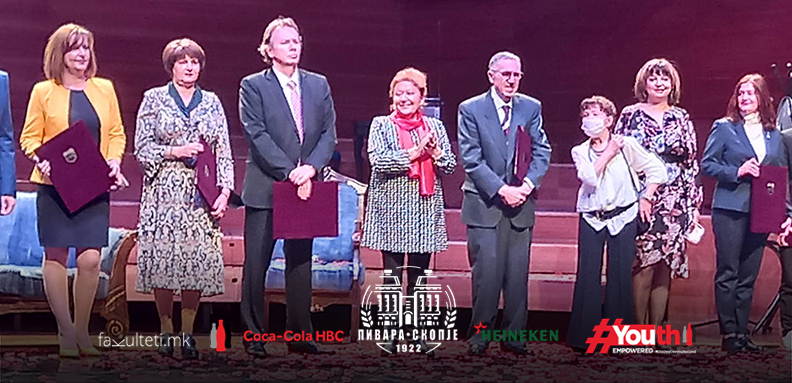
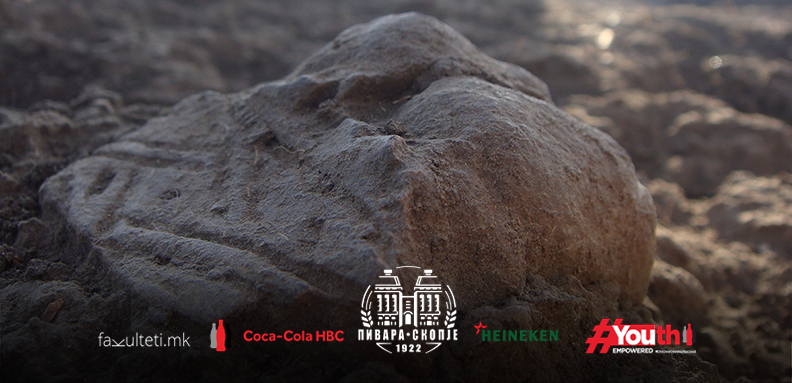
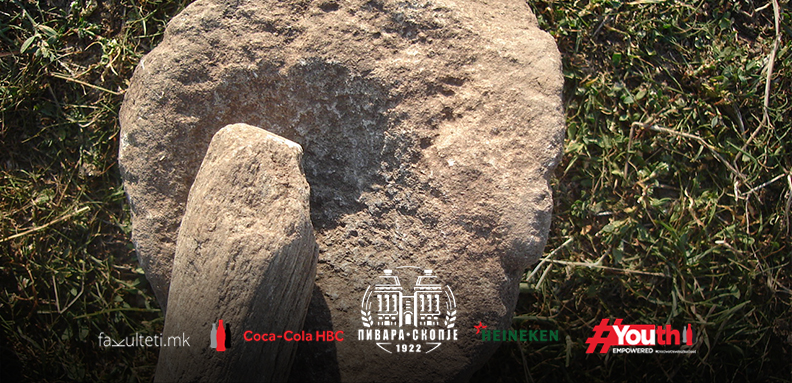
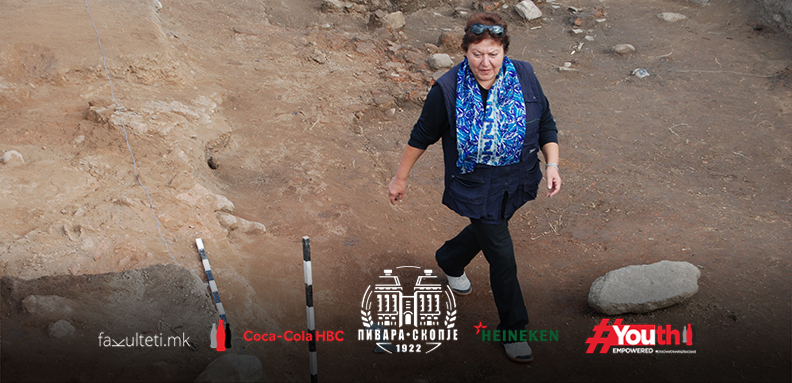

“ON THE LADDER OF SUCCESS” WITH IRENA KOLISTRKOSKA – NASTEVA: ADDICTED TO ARCHAEOLOGICAL DUST AND THE GLAMOR OF PREHISTORY OF THE LAYERS OF THE EARTH
Their personal qualities brought them great professional success. These are the stories of our successful people that we publish in the section “On the ladder of success”. Fakulteti.mk and the Educational Center of “Pivara Skopje” through the training “Skills for Success” show you the way to the stars.
The curiosity to seek answers to many things, as well as the desire and love for old things and the overall art were the first sparks that ignited Irena Kolishtrkoska-Nasteva’s love for archeology, museum work and culture in general, areas where her research contribution year was awarded with the award “November 13” of the City of Skopje this year.
Irena Kolishtrkoska-Nasteva has worked in the field of culture, museum work, with an emphasis on archeology for 35 years. She achieved glamor in prehistory with the most eminent and most frequently presented exhibition in our country and in the world entitled “Prehistoric ladies from Macedonia”. She is an active field archaeologist, museum curator and author of 20 exhibitions, participant in over 30 international congresses and symposia, and has published 47 scientific papers in professional journals in our country and abroad, as well as catalogs of solo exhibitions.
– I had a desire and love for the old things and the overall art, for which I was rewarded for artistic and sculptural solutions in the school days. As a girl, I tried to make collections of wooden ethnos and spoons, which justifies my later commitment to museum collection, as it is now in my real life, more precisely in the field of archeology. Through archeological research and excavations, I have significantly contributed to the increase of the prehistoric collection in the Archaeological Museum.
I guess I was drawn to archeology by my curiosity, which seeks answers to many things. Traveling and following the soil configuration across the country, with frequently asked questions – what is under that soil in the fields or on the slopes of a hill? Maybe it’s a Roman period or prehistory? Is that line in the hill a rampart? When traveling here and in the world, I always visited museums and admired archeological antiquities and works of art from all periods. I was also called by the archeological sites, and I visited some of them several times.
She showed interest in archeology at the Department of Art History
As a student at the Faculty of Philosophy, at the department of History of Art with Archeology, Kolishtrkoska-Nasteva managed to support the theoretical knowledge with practical work, directly on the archeological excavations.
– At the Faculty of Philosophy at the Ss. Cyril and Methodius University, I studied at the Department of Art History with Archeology and there I showed interest and love for archeology, but, honestly, primarily when enrolling in this department I was attracted by the history of art. Through my studies and after graduation, looking for employment, I had the opportunity to be involved in projects of research archeological teams, as well as the conservation of frescoes in Christian churches. Thus I managed to upgrade the theoretical knowledge from the studies with direct practice of field archeological excavations and conservation frescoes and skills. After getting a job at the Museum of Macedonia, in the archeological department, through my work I managed, in addition to the utilitarianism of the discovered movable and immovable archeological findings, to know, through analysis, the aesthetic and artistic expression in the variety of artifacts and to perform chronological and cultural identity.
“The Great Mother” was my first big breakthrough
The famous artifact called “The Great Mother” is the first large finding in which Irena participated. She considers it a sign of hope that she should continue digging and that many more interesting artifacts await her under this land. About that period she says: “Since then I have become addicted to the archeological cosmic dust accumulated in the layers of the Earth.”
– As a student I started with field archeological excavations and was a member of the research team of the famous prehistoric site from the Neolithic period – Tumba Madzari, led by archaeologist Voislav Sanev. I worked there for more than ten years, while studying, after graduation and as an employed archaeologist-prehistorian at the Museum of Macedonia. Probably for the general public, despite the thousands of finds, the recognizable find of the terracotta figure called “The Great Mother” (Magna Mater) will remain in the memory of this locality. For me, it was the first significant finding discovered “in situ”, which gave me hope that there are many more artefacts waiting to see the light of day under this Macedonian soil, and be presented to the general public.
Over fifty field excavations remain behind me, the list of archeological sites is really long, but the most long-term excavations are on the site. Pilavo, Burilchevo and ext. St. Atanasij, Spancevo, in the Kocani region. Both were researched after ten years. Extremely rich ceramic material was discovered, from everyday to luxurious pottery, and about thirty found terracotta figurines with representations of women with decorated tattooed bodies speak of the rich spiritual life. The collection of these figurines from the mentioned sites, which are placed in the exhibition space of prehistory – Eneolithic collection, in the Archaeological Museum, is priceless. Many beautiful findings have been discovered from these excavations, as evidenced by the filled museum windows.
Field work with ajvar, cheese, cucumbers, vehicle repairs …
Field research and museum work are inextricably linked, says Irena. According to her, the most beautiful moments in the field work are when with her colleagues, with fixed gazes in the distance of many playful hills, through professional conversations, they try to find answers for the inhabitants who inhabited the settlements they are exploring.
– I work on field research, on many of them as a manager, and on some as a professional associate, but the cabinet-museum work is also necessary, where the chronological framework of the discovered materials from the excavations is determined by analysis and parallels. All this is followed by the presentation of scientific papers published in professional journals in our country and in the world, presentation of scientific knowledge with the participation of international symposia. And, of course, it is essential that the selected and most representative archeological findings be exhibited in the museum windows, so that visitors can get acquainted with our rich past.
There are several project excavations in one year. Endless to-do list: project preparation, competition in the Ministry of Culture, bill of quantities calculations for the entire endeavor, doing “magic” with insufficient funds to get certain planned ideas in digging, all-day field duties with co-workers, colleagues, workers. Providing space for accommodation of the team in village houses, transport of tools, etc. field and office supplies, groceries – ajvar, cheese and cucumbers to catch up on late diaries. Driving to the off-road bench daily, vehicle repairs …
Together with my colleagues in the field, we try to resolve dilemmas such as where the nearest water source was, where the cattles were kept, how many ceramic pots there were on average in one dwelling and many other related topics, in order to create a picture of their life at that time. In the afternoon and at night, the archeological research material is checked, selected, washed, documented, packaged, and after returning to the museum, documentation, laboratory processing, cleaning, conservation and connection of the discovered fragments with the help of the conservation team. Preparation of reports for the competent institutions and financial report.
Technology is changing the work of archaeologists in a positive way
Kolishtrkoska-Nasteva had the opportunity to work on sites from prehistory until the Middle Ages, but prehistory prevailed. Her beginnings are still related to prehistory, so she herself says that to her great satisfaction, in the museum she has been assigned a job for the Eneolithic period, which covers the 4th and the middle of the 3rd millennium BC.
– Over the years, slowly but surely I fell in love with the terracotta figurines discovered throughout the homeland, which originate from the distant periods of the Neolithic and Eneolithic, more precisely from the 6th millennium BC. until the middle of the 4th millennium BC. I made an exhibition entitled “Prehistoric Ladies from Macedonia”. 95 terracotta figurines with a female expression were included in this exhibition.
Technology changes the work of archaeologists in a positive direction. With geomagnetic field research it is possible to identify many buildings, structures, settlements, all without excavations, which saves money and time. Otherwise, it is known that the budget for culture allocates enough funds to barely go through, so it remains to conclude, specifically in my many years of excavations, that enthusiasm and love of archeology and museology have always pushed me to realize all projects.
Prepared by: Nikola Petrovski









